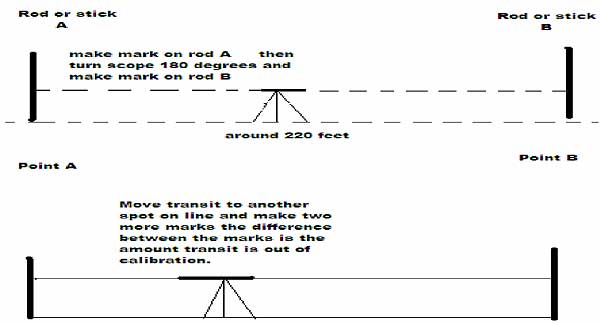Select the Right Auto levels for Your Needs
With such a broad range of automatic levels available, buyers must be informed to make a correct purchase decision.
Automatic levels have a wide range of uses in general construction, equipment installation and specialised monitoring, and each application has a required level of precision. An automatic level that greatly exceeds your needs is an unnecessary expenditure and, conversely, the required level of work quality cannot be achieved unless the instrument is capable of delivering the required precision.
To make an informed selection, buyers should understand:
- How to use automatic levels
- Type of work determines required precision
- Accuracy, quality and features determine price
A brief overview of how automatic levels work and the key components may be helpful to many buyers. With the development of automatic level technology more than 50 years ago and the widespread availability and low cost that has emerged over the last 20 years (due to design and manufacturing improvements and economies of scale), accurate levelling is not so dependent on instrument operator skill, as the inherent errors in manual bubble levelling are virtually eliminated. With quality auto levels, the user closely levels both axes (within the level’s compensation range) with a circular bubble vial, and the instrument then adjusts to automatically establish level and maintain level during use.
The key to an automatic level is the compensator, where gravity is used to suspend part of the instrument optics vertically. Auto levels use a standard sighting telescope, but the light entering the objective lens passes through a mechanical compensator system before reaching the user’s eye. Conpensator’s often consist of a prism suspended with very fine wires so that plumb is established and light passing through the prism is set to plumb. In order to speed the process of auto-levelling, which can only happen when the compensator coming to rest in the vertical position, a damping device is employed to rapidly stop the suspended compensator from swinging and to compensate for possible image-impacting resonance (from wind forces on the instrument and tripod or ground vibration) in order to maintain stable sighting through the cross hairs. Both magnetic and air damping of compensator element are commonly used, with the air type required when used in areas with external magnetic interference. While the compensator and damping components in all auto levels share the same principles, there are differences in quality that influence precision and reliability.
Auto Level Setup
1. Setup your tripod as level as possible, step on tripod legs to drive into the ground.
2. Attach auto level to the tripod.
3. Adjust level so bubble is centred in vial.
4. Adjust recital until cross-hairs are clear.
5. Adjust the objective lens until object you are sighting on is clear.
Care of Auto Levels
If the instrument becomes wet leave it unpacked. Wipe down instrument, clean and dry transport case. Pack up instrument only when it is perfectly dry. Never touch the glass with fingers, use soft clean lint-free cloth to clean lens.
Checking Auto Level Accuracy
1. Set up instrument in an area that is as level as possible and which is about 220 feet long. Place two matching level rods or two pieces of strapping in the ground about 200 feet apart with the faces toward each other. Position and level the instrument so that the distance from the instrument to each rod is the same measure.
2. Take a reading on each rod with the instrument (or mark each piece of strapping where the cross-hair is sighted).
3. Move transit to another spot on the line and take readings and mark both rods again.
4. The difference between the marks on the rod will be the error of the instrument.The error needs to be corrected by a competent repair technician.
Type of Work Determines Required Precision
The quality, accuracy and precision required are dictated by use, specifically:
- Degree of precision required as dictated by type of work (e.g., earthwork, drainage, landscaping, concrete form-work, precision levelling of industrial equipment, deformation monitoring)
- Sighting distance required coupled with degree of precision
- How often it will be used (durability, ergonomics) and desired useful life
- Job-site conditions (environmental factors, including vibration resistance)
Accuracy, Quality and Features Determine Price
The price of automatic levels range greatly, from under $200 to upwards of $2000, depending on precision, quality, durability, features and performance. As all manufacturers use the same basic technology, there is a very strong linkage between features, quality and cost. The following parameters should be considered when evaluating available models during the purchase process:
- Enclosure/housing materials and integrity (plastic or steel)
- Overall manufacturing quality (component manufacturing precision, assembly)
- Accuracy (internal mechanics & optics)
- Optics geometry [telescope magnification (20x to 34x), field of view, minimum focus distance]
- Optics precision (resolving power, relative brightness)
- Availability of rough & fine focus mode
- Horizontal circle, graduation, drive movement for smooth precise pointing and angular measurement
- Compensator characteristics (suspension wires, materials), durability; function monitoring ability
- Dampening system characteristics- methods/materials (magnetic, air)
- Shock resistance
- Vibration resistance/image stability
- Environmental rating [enclosure sealing; water-resistant or proof)
- Ergonomics
- Distance estimation capability (stadia ratio for optical-based determination)
The finest quality auto levels currently available are made by Nikon, Topcon, Sokkia and Leica, with their top end instruments being the most expensive, as would be expected. The top of the line automatic levels by these manufacturers are used for high-precision levelling and monitoring work. Industry leaders Nikon, Topcon, Sokkia and Leica also produce models that are mid-grade and models at the lower end of the price range. Spectra Precision automatic levels are in the middle to lower cost range and are a good value. There are also many low cost models suitable for general use by Apache, CST Berger, David White, Pentax, Johnson, Bosch, Northwest and DeWalt.
If considering used auto levels, the mid- to upper level models of the industry leaders are very durable and a safe purchase if they were well cared for; purchasing used instruments from a dealer is your safest alternative. Kern and Wild auto levels, though no longer made, are very high quality and many are still in service.

